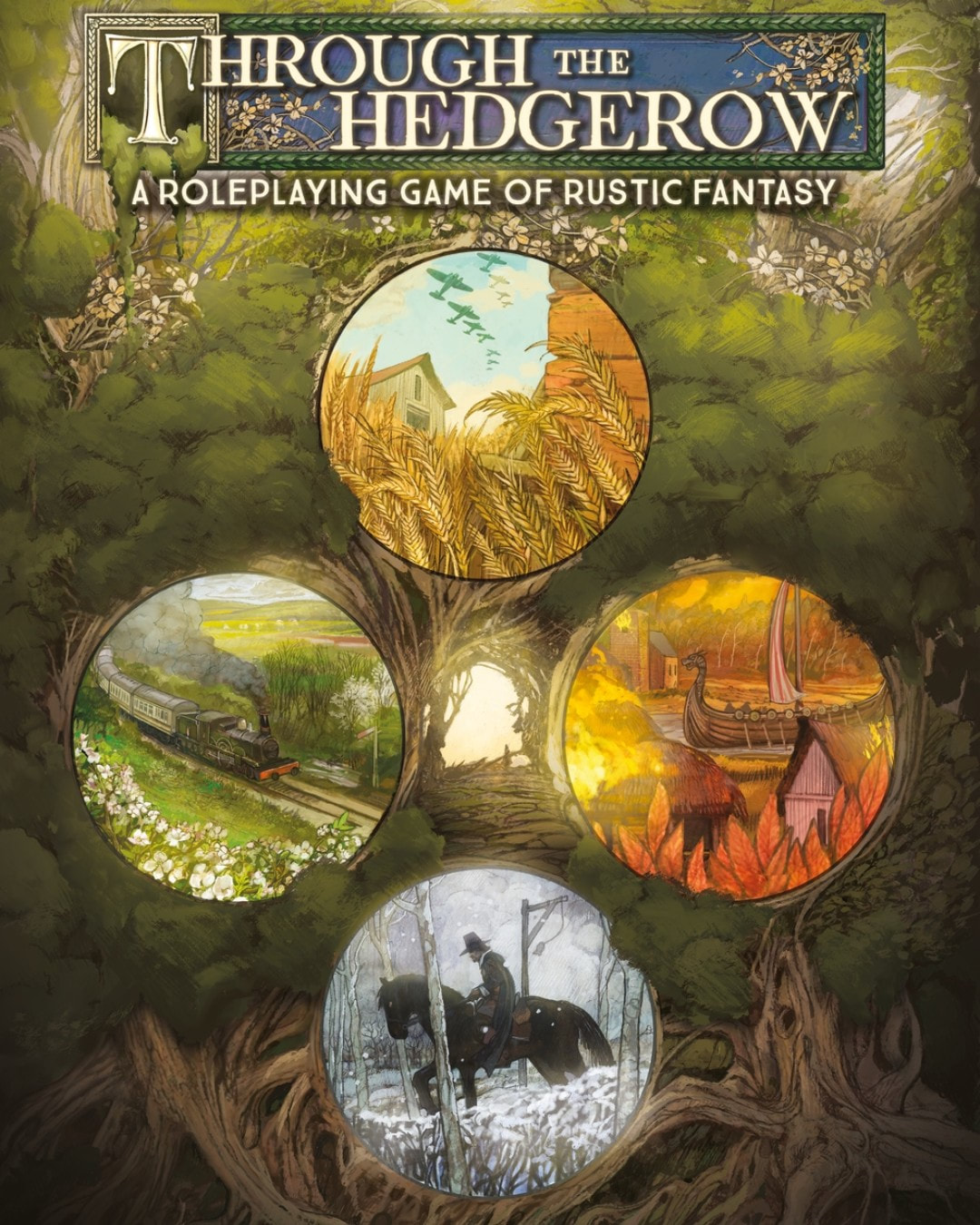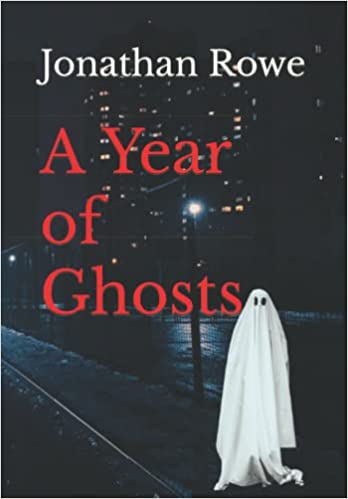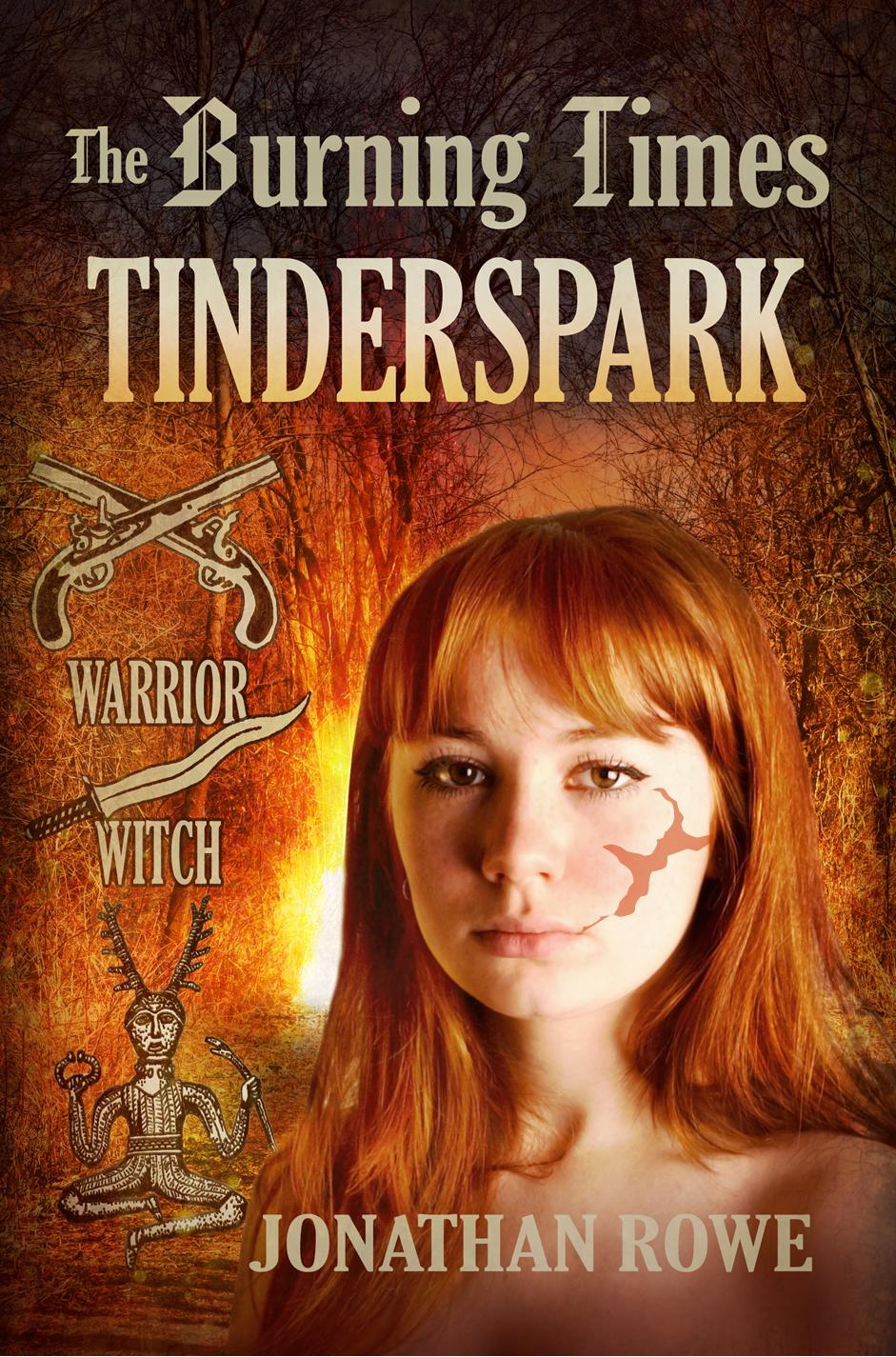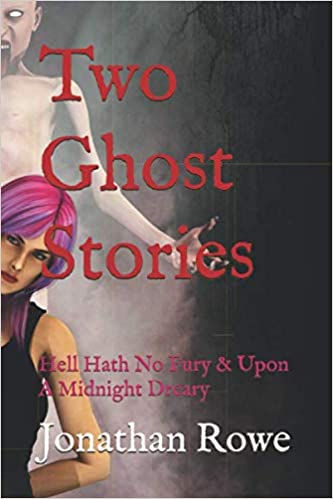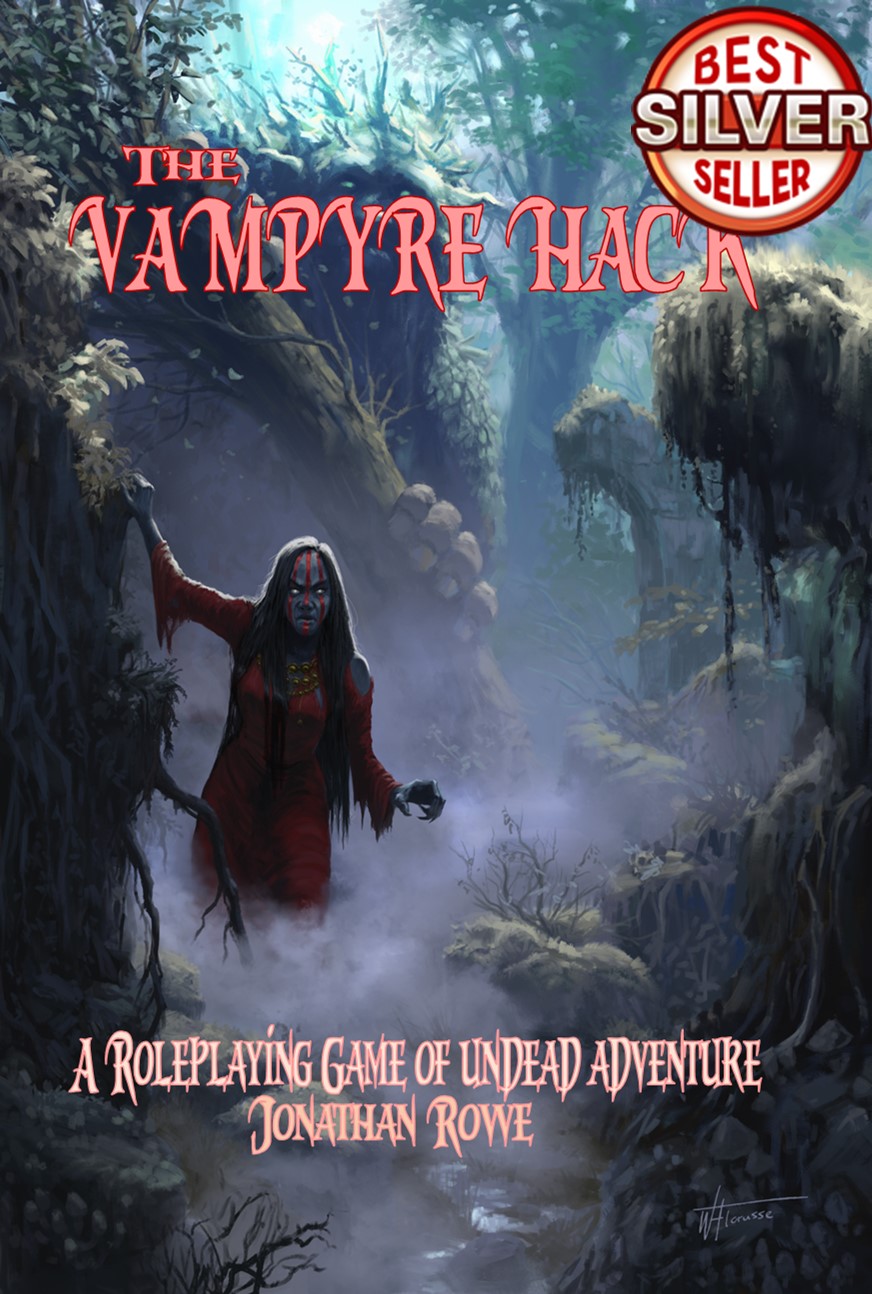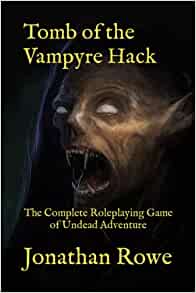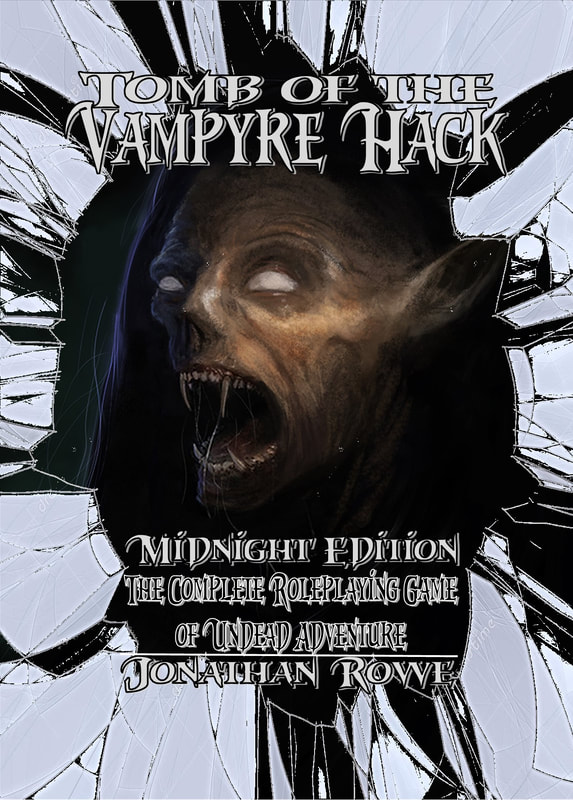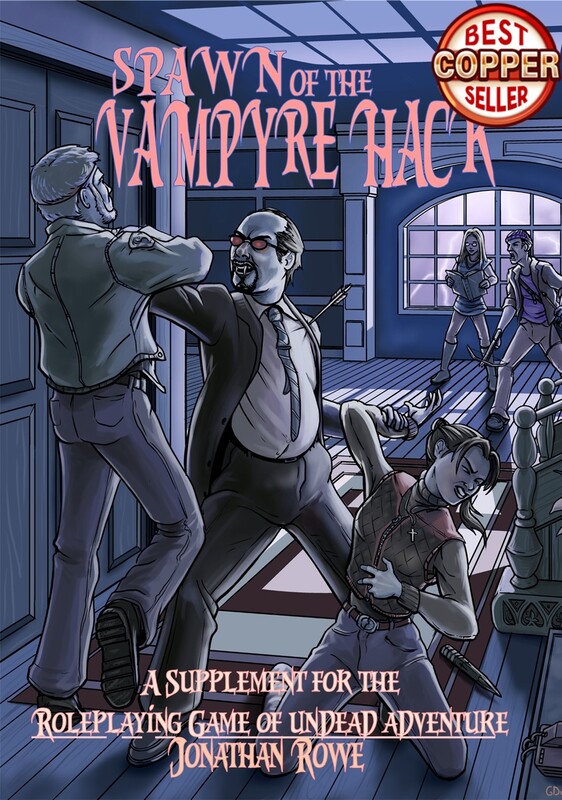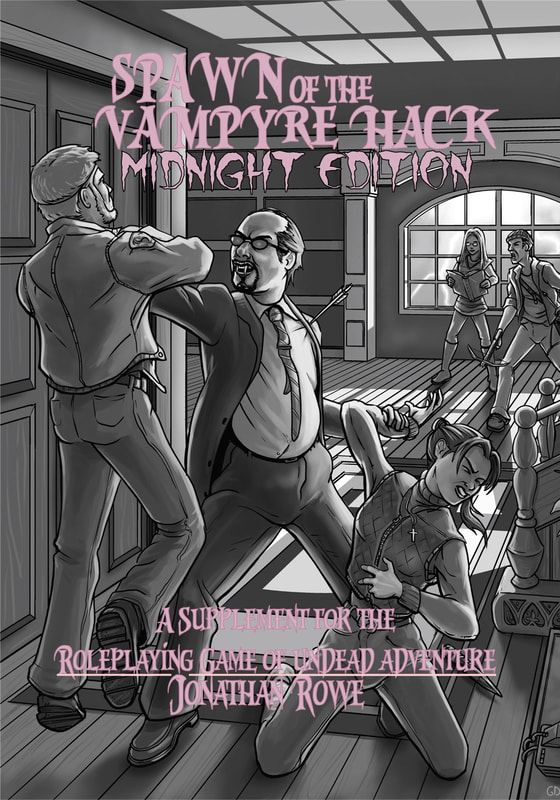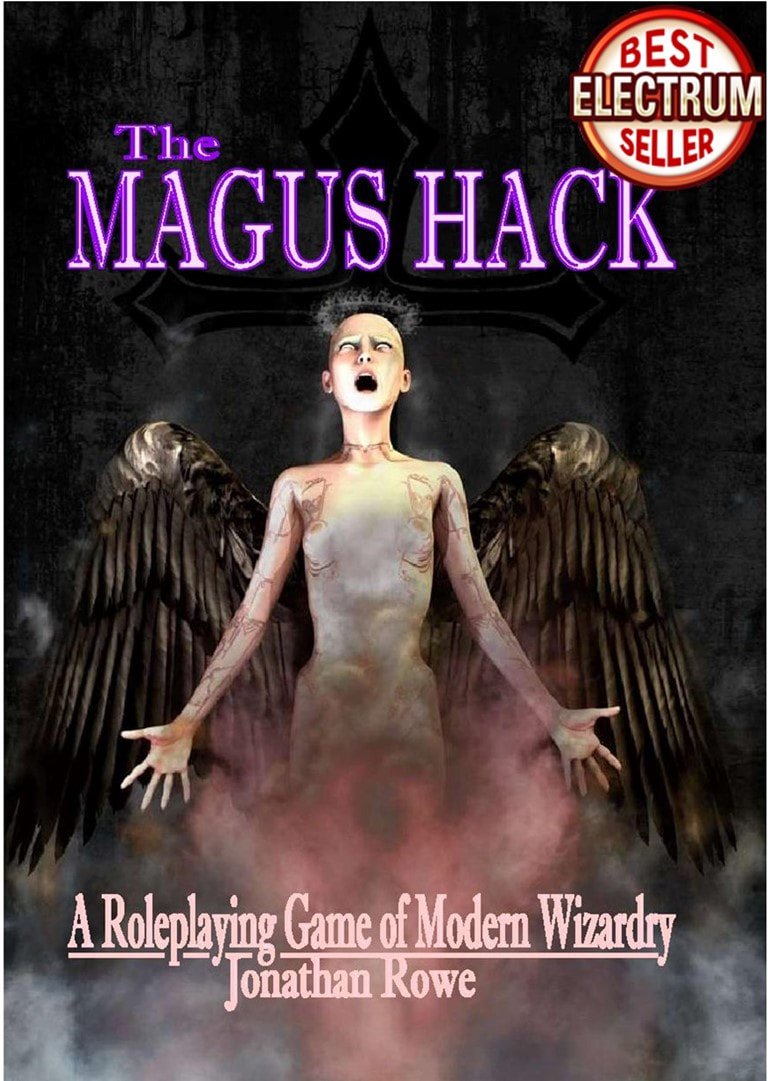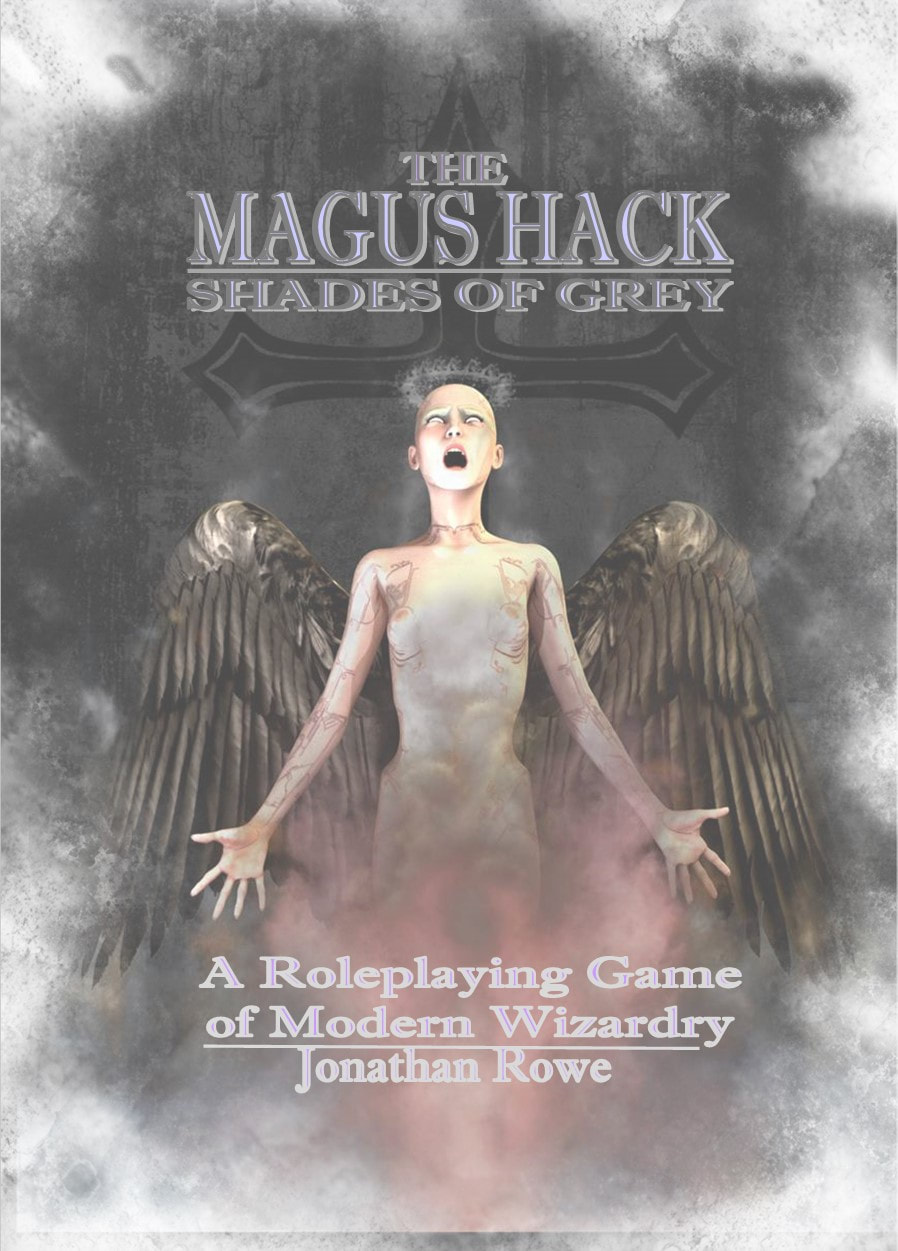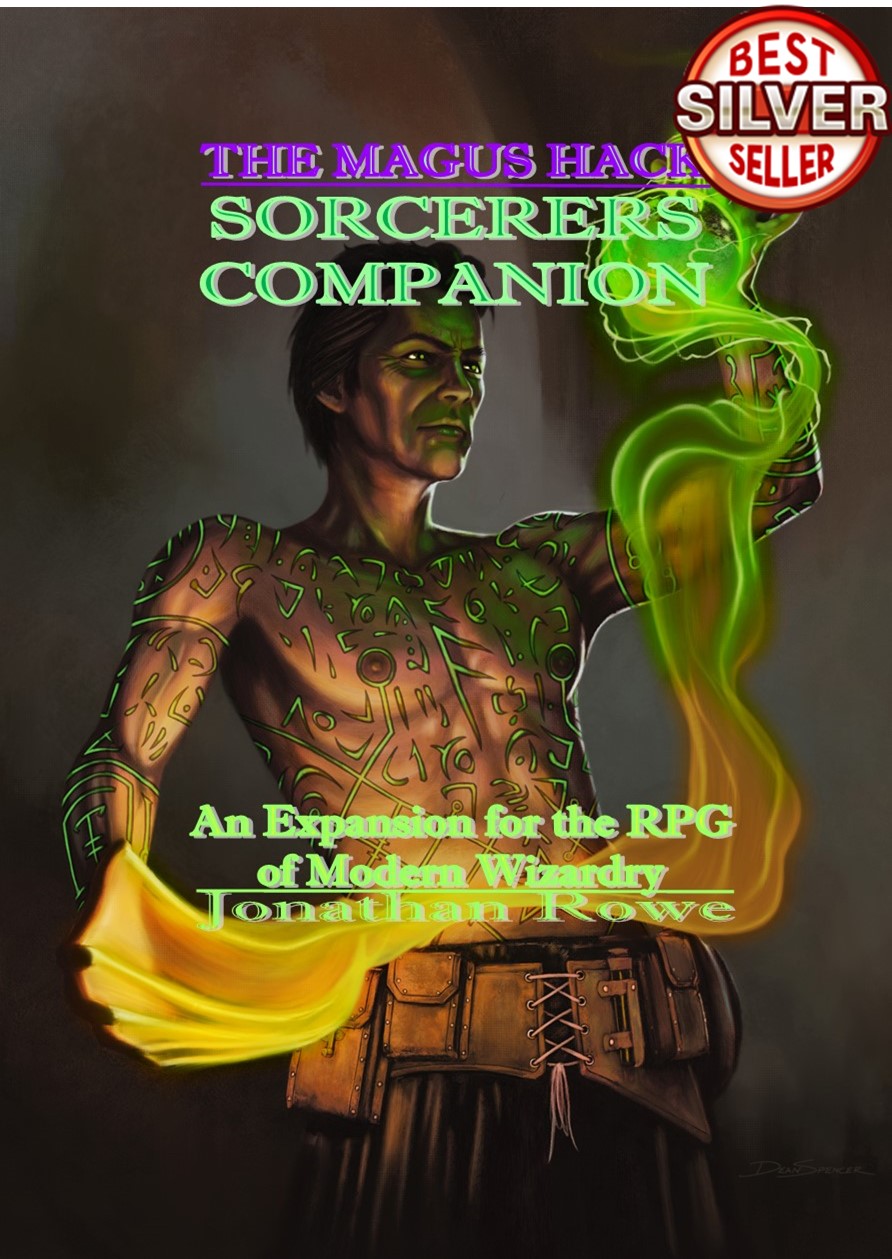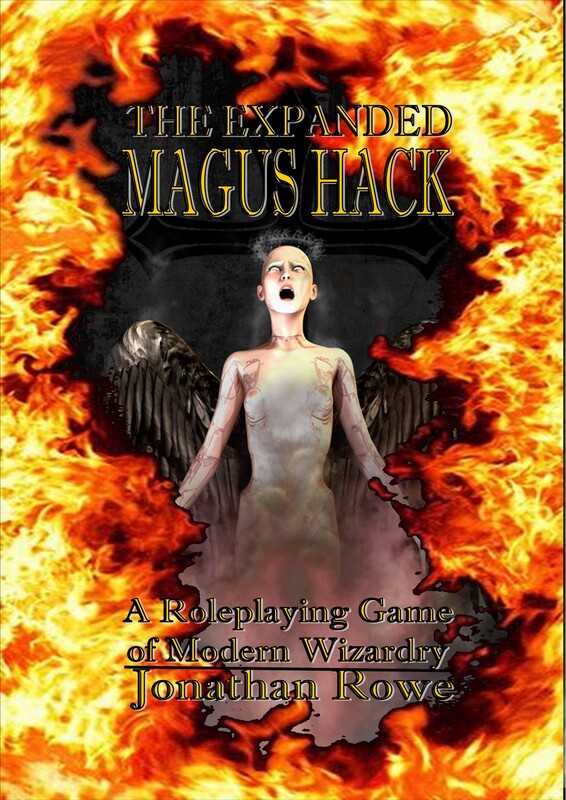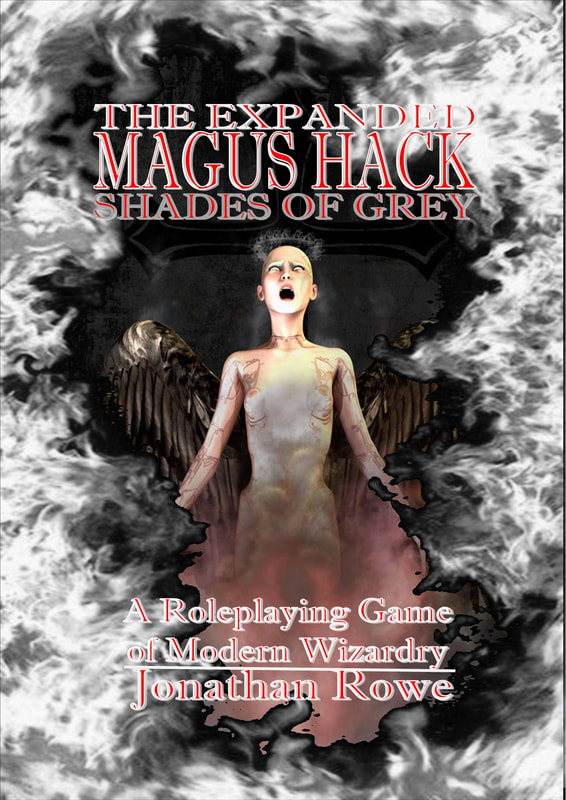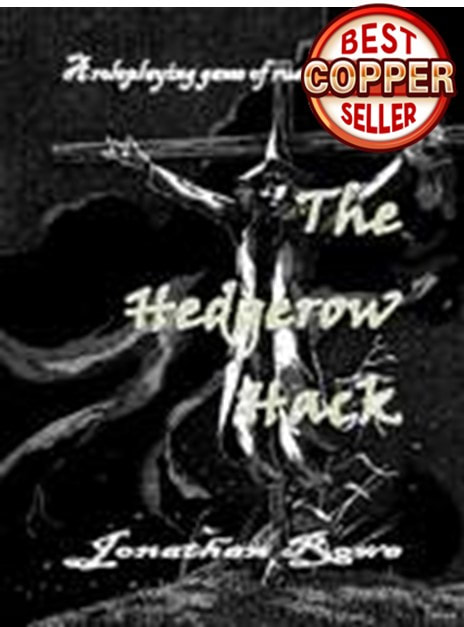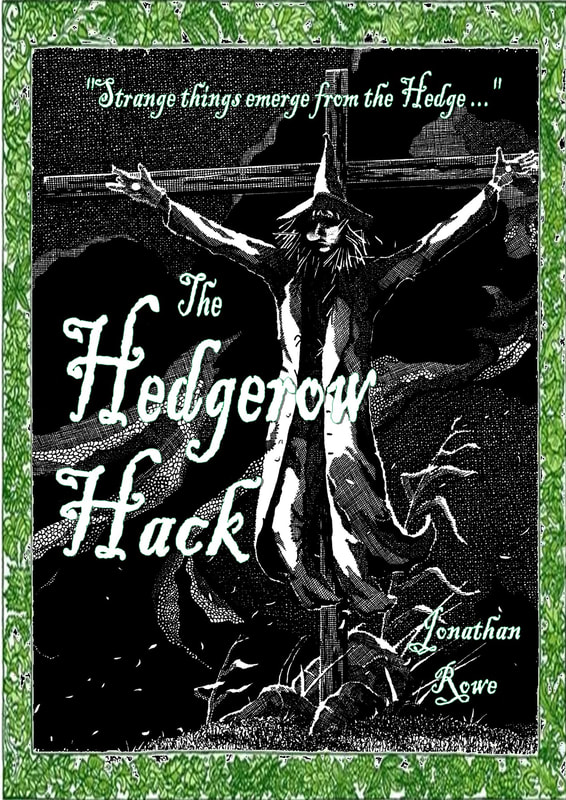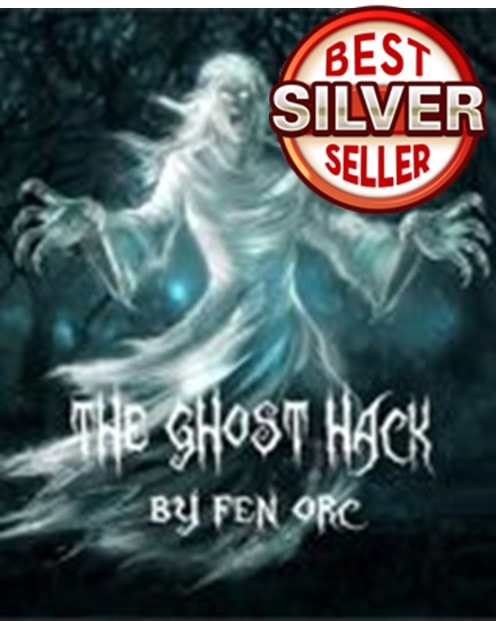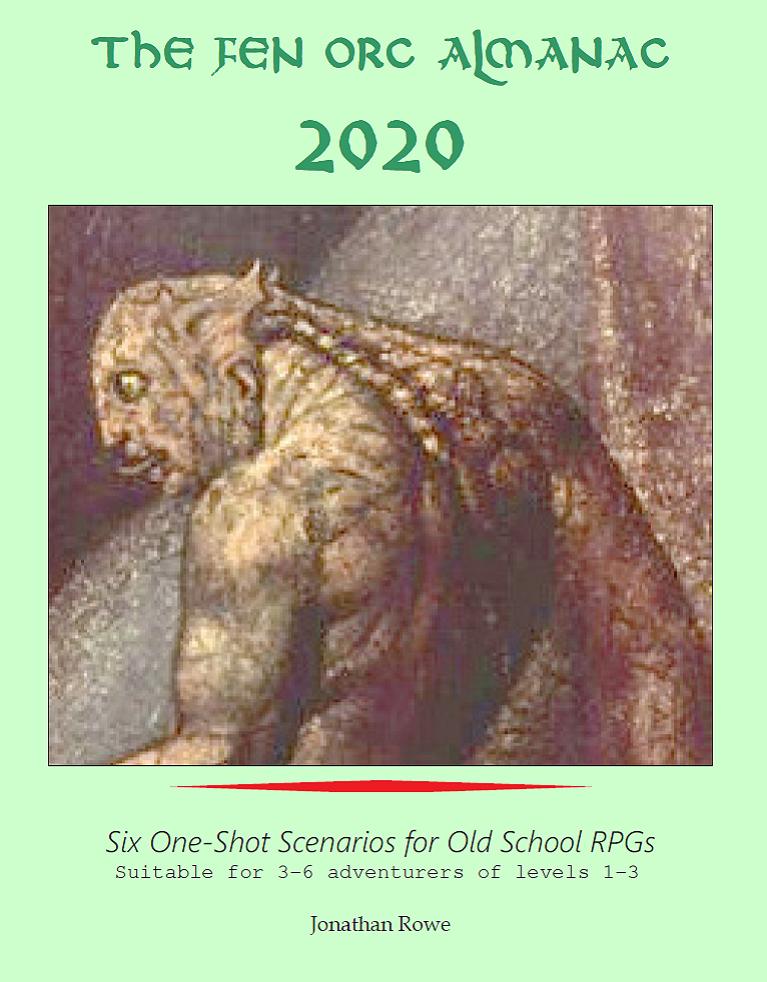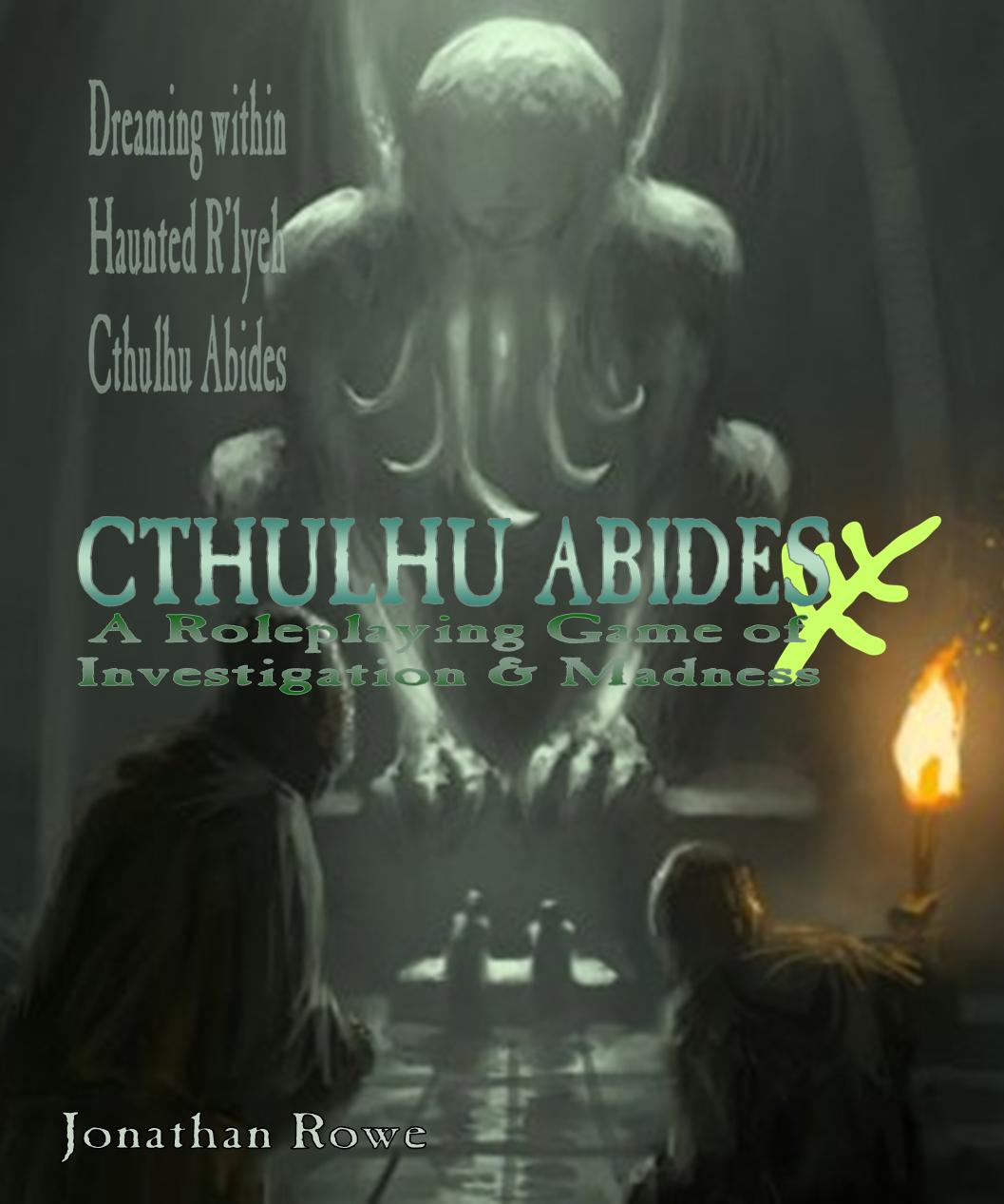The evil that men do lives after them; It's time to look at the Necromancer class that vexed the correspondents on White Dwarf's letters page in 1982-3. And yes, one of those writers was me! But before I get into the idea of a villainous - if not psychopathic - character class, we need a bit of context. In the early years of D&D, the big debate was "Evil Character" - meaning, evil PCs, of course. Original D&D only featured three alignments (Lawful, Neutral and Chaotic) that lacked clear moral flavour, but Gary Gygax soon added a Good/Evil axis which he inserted into Basic D&D (against Eric Holmes' wishes, seemingly) and made central to AD&D's whole cosmology. Early alignment chart from the Holmes Basic Set (1977) and Gygax's weird map of the Outer Planes, with gods living in different realms based on alignment (Lawful Good in the Seven Heavens, Chaotic Evil in the Abyss) - the sort of thing that only longstanding custom can render un-mysterious It was the arrival of the AD&D Assassin sub-class that made an implicit problem explicit. The OD&D Assassins were neutral (James Bond-style spies or ninjas) but the AD&D Assassin was the first explicitly Evil official character class. Of course, the traditional dungeon adventures of the time didn't offer a wide range of moral options. You could steal from your party members. You could kill your party members. A lot of debate went on about whether PCs should torture and kill monster prisoners. Gygax advised stripping away levels of experience from Good-aligned characters who did such things. Consequently, players adopted Evil-aligned characters to afford themselves more latitude of action. Evil-aligned campaigns flourished, where all the characters were villains and sociopaths. Sickening trails of rape and murder were enacted as (mostly adolescent) players tested the limits of the game and their friends' gag reflexes. You can see traces of this confusion of taste, morality and teenage hormones in the early issues of White Dwarf. There are erotic art and miniature sculpts that later vanished from the magazine. The inside cover of White Dwarf 8 (1978) invited us to enjoy Atlantean miniatures of doubtful dungeon relevance - but such attention to detail...! The fantasy comic strips featured sexual interludes that would make a Warhammer 40K player blush. Lugubrious warrior Kalgar gets some action in David Lloyd's serial, also from WD #8. Then there was the Black Priest in White Dwarf 22. This was an Evil-aligned character class from the pen of Lew Pulsipher. It was introduced with a piece of full-page art depicting a human sacrifice through dismemberment of a nude woman and it's so squalid I can't bring myself to reproduce it here. This was 1980. The '80s brought a mood of moral rearmament. Maybe it was Margaret Thatcher. Maybe it was Mary Whitehouse. Maybe the leading lights of the hobby just grew up and got girlfriends. For whatever reason, the dismembered nudes faded from the pages of White Dwarf, although there was never any shortage of chainmail hotties on the covers. What Armour Class is that, one wonders? The focus of RPGs shifted from playing deranged serial killers to carrying out focused missions in coherent settings. During 1981, Lew's Introduction to D&D series and Roger Musson's Dungeon Architect series promoted a much more respectable view of the things people get up to in RPGs. Penelope Hill's Summoner (#27) and Phil Master's Demonist (#47 and blogs passim) were tasteful affairs compared to the macabre Black Priest. But in 1982, Lew Pulsipher was back, with "an evil new AD&D character class": the Necromancer from White Dwarf 35. Click the cover for a peek at White Dwarf 35 It's not clear whether this is intended to be a valid class for PCs or a purely NPC villain class. The description implies the latter: A necromancer is a loner. He prefers to surround himself with the dead (and undead), not with life. He rarely subordinates himself to anyone, preferring to rule his own 'kingdom of the dead'. With every level the Necromancer attains, he loses a point of Charisma. When it hits zero, he can no longer live in society with other humans. This helps represent the growing suspicion of acquaintances and general reaction of people as he becomes imbued with Death. When discovered he must flee (unless he can defeat the aroused town) and begin his lone existence. This definitely places a Necromancer character outside the purview of players. Or does it? A PC Necromancer with 10-11 Charisma will have reached 'Name Level' before becoming ostracised - the point in their career where most PCs decamp to a fortress of their own to party with their henchmen and stop visiting the local trading store in person. Tenth level Necromancers get to build a 'Temple of Death' out of - wait for it - literally tons of human bones! The Temple of Death must be constructed of human bones - the more the better (and bigger) - bonded by a mixture of human blood and various thickeners. Also from 1982!!! Why embark on such a gruesome career? Let's pretend the Necromancer is an actual PC-option and view it as a character class. There are the usual prerequisites: above average Intelligence, high Constitution and - get this! - a Wisdom of no more than 12! I suppose there's a sort of implied moral judgement here that was lacking in the Black Priest: necromancy is not an equally valid wisdom-path, but rather the thing philosophical cretins get into because they can't grasp real spirituality. Necromancers advance in XP, fight and save as Clerics, including d8 Hit Dice. They can use all armour and weapons. The main power of a Necromancer is undead-wrangling. They can speak with all types of undead and Turn Undead like a Cleric, but they make the undead friendly instead of frightening them away. They can try a second time to 'turn' already-friendly undead and if they succeed these monsters are dominated indefinitely and join the Necromancer's entourage. The Necromancer loses control if the undead wander too far away or get turned by somebody else. Necromancers get a bunch of powers as well that work rather like spells. Necromancers gain these abilities at a similar rate to Magic-User spells, but they cannot seek out new ones (except by going up in levels) and don't need spell books. Once selected, they can use their ability once a day. But you weren't paying attention, were you? You were reading Unholy Strength of the Eternally Damned and thinking, What is that??? You perform it on a minion who drinks the blood of a human sacrifice and has a chance of getting 18/00 Strength (50% usually but higher for females, virgins and pregnant mothers!). Boinnng!!! - you're Lawful Evil now and damned into the bargain. A lot of these powers manufacture, summon or control undead through a telepathic bond. There are some novelties, like manufacturing flying skulls to guard your lair. Later on, you're raising a Zombie Army of 1-1,000 (great if you roll 1,000 but embarrassing if you roll 1), summoning the angel of death and building your own actual 'Frankenstein'! A couple of other abilities stand out. When your Necromancer dies, he can curse his killer - and then return from the dead as an undead version of himself and he turns into a Lich at 15th level! When writing these summaries I normally alternate my masculine and feminine pronouns. With the Necromancer, I don't bother. The text doesn't specify that they are all male, but it seems to be assumed, as we shall see. If turning ugly and creeping off to live in your bone temple doesn't bother you, the Necromancer has one major limitation. Regular living sacrifices. You need to do these to heal, because Necromancers can't regain Hit Points in normal ways (i.e, resting, cure spells) and extra sacrifices are part of the job description. A necromancer must sacrifice periodically to his god of death. If he fails to do so faithfully he loses all spell-like abilities Now I see why there isn't a drawing of a nude, dismembered woman: Lew turned it into a table this time. Sheesh. Picking out one detail of this for special condemnation seems rather to miss the point, but you can't help but shudder at the emphasis on harming women in all of this. Needless to say, White Dwarf readers took up their green biros to write in with praise or detraction. I was one of them, gushing over this horrid confection as only a pompous 16-year-old can: I had a lot more to say about whips and the damage output of crossbows, but let's draw a veil over that. Leave it to Don Turnbull to strike a note of sanity: But Don was shouted down by further letters, including a self-defense from Lew arguing that, since many gamers play characters that are amoral bastards anyway, there can be nothing wrong with providing a character class that channels them into crass and misogynistic murder-fantasies. No, that wasn't quite what he said. Actually, that kinda was what he said... Phew! You can still catch some heat from those old letters-page exchanges. They reflect, of course, the same positions we find on social media today: untrammeled free-expression on one side versus censorious concerns over taste and decency on the other. What's missing from the '80s version is anyone noticing, much less caring about, the issue of the representation of women. The past is another country, my friends. As you can tell, I've gone through an about-turn on this. The moral nastiness of the Necromancer is pretty clear to me now, as much as I was blind to it as a teenager. The point about Lew's creation is that it serves up evil as titillation, a sort of character-class-porn. It doesn't explore evil or necromancy or the metaphysics of death or undeath. It just concocts a Grand Guignol parody of a class and says, 'Here, be as monstrous as you can! Everything is permitted!' Several correspondents compared the Necromancer to the AD&D Assassin, but that misses the point. The Assassin can be played in a variety of ways. Maybe she only takes out contracts on rapists or maybe she uses her skills to strike down the oppressive rulers who enslave her people. Maybe he has an honour code or a devotion to the craft of the perfect kill. But there's nothing to do with the Necromancer because the class does it all for you: assemble an undead horde, sacrifice female virgins, turn into a Lich. There's no other flight path. It's the opposite of player choice and autonomy. Nonetheless, I can't leave matters there. I've been going through the old White Dwarf character classes and revising and re-thinking them. Some, like Phil Masters' Demonist, just needed tweaking into a less ponderous format for perky, up-and-at-'em, White Box. Others, like Brian Asbury's Houri, needed a bit of de-toxifying first. With those classes, I was re-connecting with my teenage self, who had loved them and incorporated them into his D&D campaign. I don't want to reconnect with the adolescent mentality that was so easily enamoured of the Necromancer. If anything, I want to redeem it. There is a role for a 'redeemed' Necromancer. The class does serve a purpose in campaigns above and beyond what Chaotic Clerics get up to. It's intriguing to play an anti-hero, a Faust-figure, someone doomed and invested in their own damnation. There has to be something positive about it though. Aristotle says that men do not become tyrants in order to keep warm: to adapt him, they don't become Necromancers just for a quiet life. Necromancy needs to be a journey, rather than just a dissolution; a mission, not just an act of self-corruption. And those sacrifices have to go...
2 Comments
16/5/2020 12:13:29 am
I thought I made clear in the original that it was an NPC, in effect another monster. It was an attempt to represent the evil clerics as something more than reverse-goodguy clerics. EVIL.
Reply
Jean-Bernard Mondoloni
21/3/2021 02:19:10 am
Extensivley palyed as a PX in my campagin in late 80ies /early 90ies. Le player assumed this role for years, and even create a temple with the rules given. A great memory !
Reply
Leave a Reply. |
30 Minute Dungeons
Essays on Forge
FORGE Reviews
OSR REVIEWS
White Box
THROUGH THE Hedgerow
Fen Orc
I'm a teacher and a writer and I love board games and RPGs. I got into D&D back in the '70s with Eric Holmes' 'Blue Book' set and I've started writing my own OSR-inspired games - as well as fantasy and supernatural fiction.. Archives
July 2024
Categories
All
|

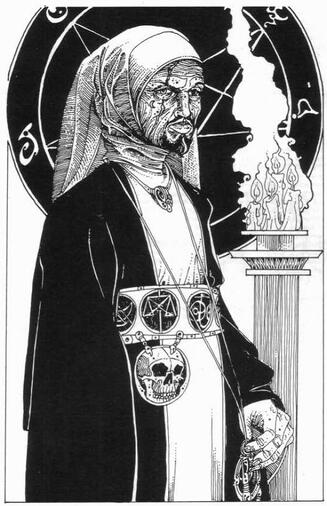
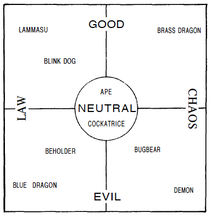
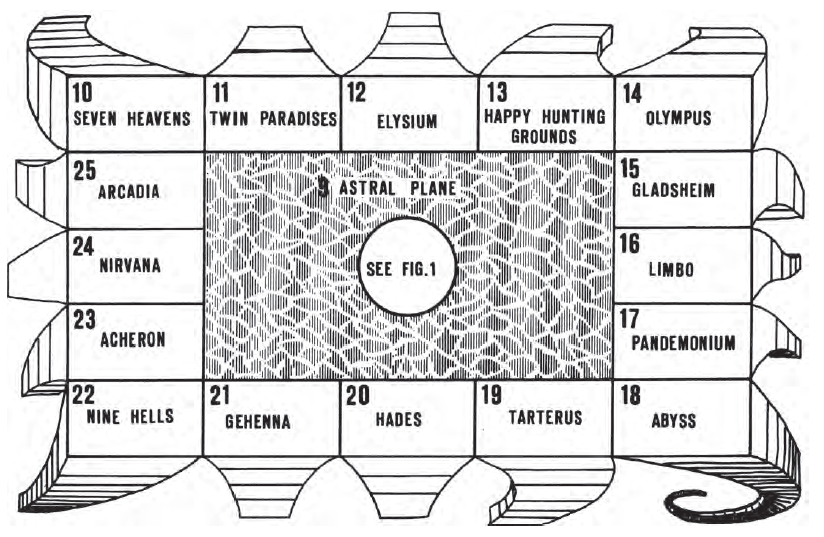
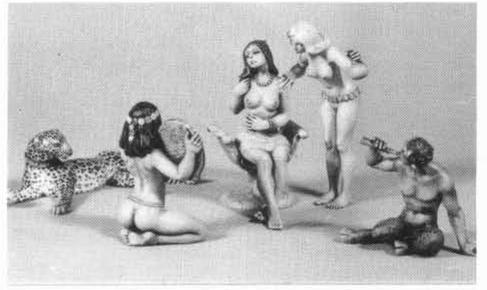
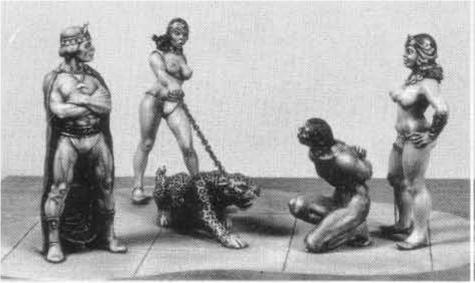

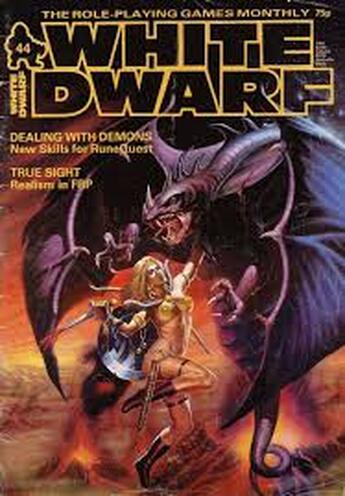
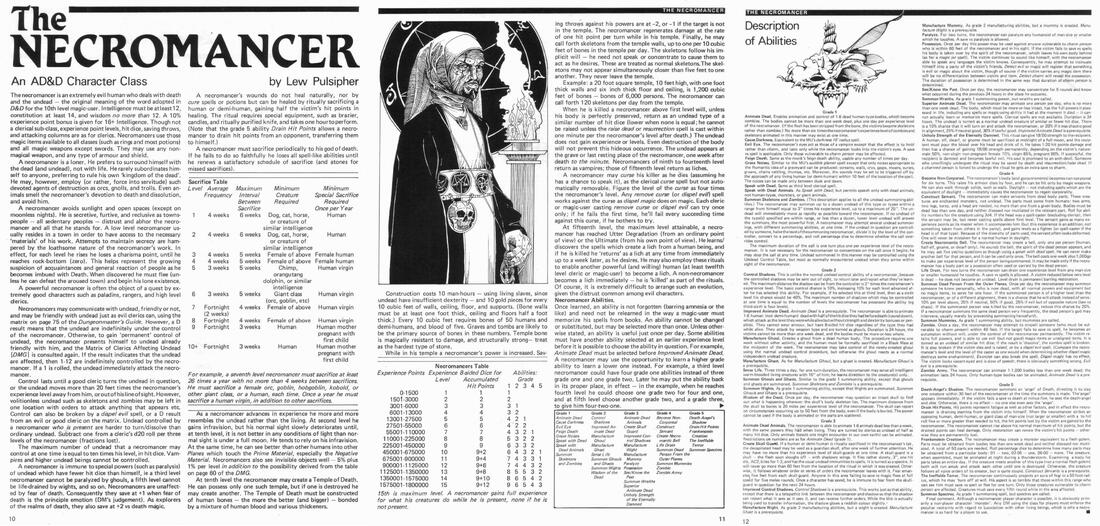
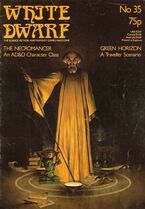

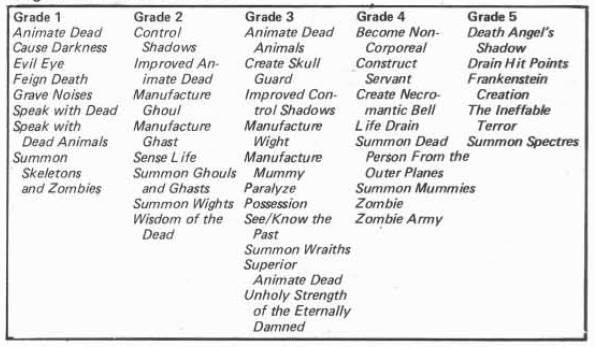
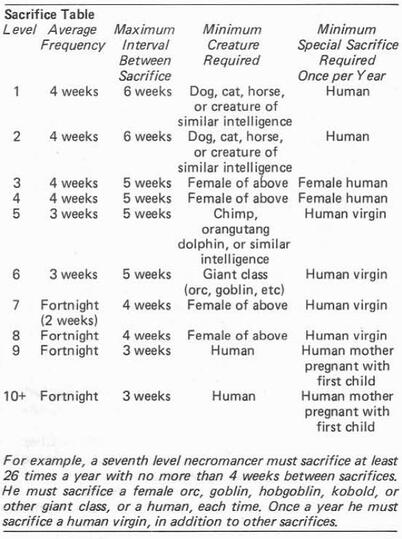
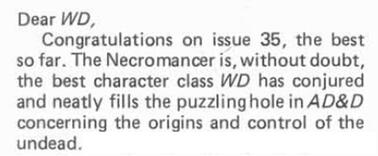
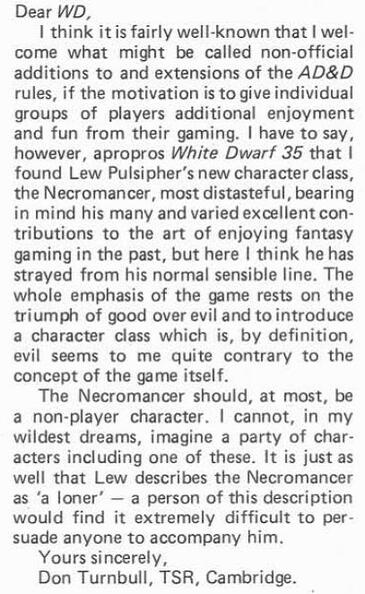
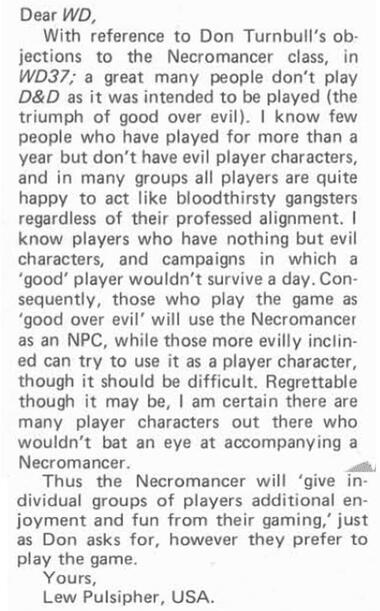
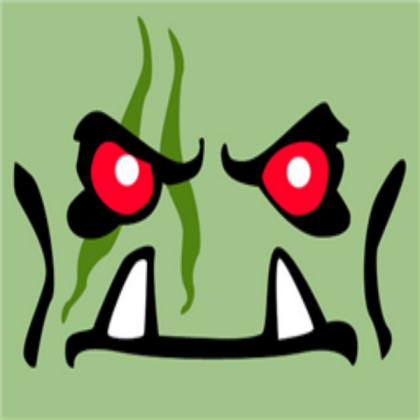
 RSS Feed
RSS Feed
